Avistar Peru – birding festival in Lima 2011.
Avistar Peru – Miraflores Nov 2-6, 2011
I have the pleasure to announce that an anual birding festival – AVISTAR PERU – will be held in Lima each year. It has been inspired by the yearly AVISTAR festival in Sao Paulo organized by Guto Carvalho and his friends. Guto, has been a great help getting us on track for this exercise. I always thought his concept of a birding festival for local people in a major multi-million capital would have a far larger impact, than making international birding festivals in remote places in South America – at least if the purpose was to create a boom in local nature-watching and future birder infrastructure. The international birding tourism to Peru at this point is just not enough to sustain big investments in infrastructure for birders. Creating a local market first, seems like a better strategy, both for those providing birding services as well as for conservation initiatives that take local communities into account.
As, no-one else did anything to make it happen (PromPeru were interested in the idea when approached a few years ago, but would not be the initiator), I decided to get some friends together – and just make it happen. No matter what.
Now this is a Kolibri Expeditions project with support from Municipalities of Miraflores and Lima, Pantanos de Villa, InkaTerra, Living-in-Peru, and individuals such as two former vice ministers of tourism – Mr Eduardo Errarte and Mr Pablo Lopez de Romaña.
The first Avistar Peru will be held in a prime central park- Parque Kennedy – in the heart of Miraflores November 2-4. During the weekend November 5-6 there shall be several excursions in the vicinity of Lima.
Birds of Lima – free e-book!
Before, the birding festival, several Peruvian birders and ornithologists will be involved putting together an online book – Birds of Lima – which when finished can be downloaded to computers, laptops, iPads and other mobile devices 100% free of charge. The advantage of the electronic version of such a book is that both calls of the birds and videos can be embedded. If we were to produce a paper version the book, we could maybe hope for around 1000 people at the most willing to pay for it. However, a free online version could possibly attract 10.000 people – or why not 100.000. After all it is free of charge – and there are 8 milion people in Lima.
I believe that the vast majority of new birders will be recruited by those that accidentally take a photo of a bird and tries to find out what it is called, rather than someone receiving a pair binoculars and a birdbook as a gift. Thus, with birding photography as the starting point rather than a pen, notepad and binoculars, the online book will give many tips on how to photograph birds, what compact cameras are particularly good for getting identifiable photos of birds and where one can upload mystery photographs for other birders to help identification. There will also be a notes on how to make recordings of birds with cheap equipment. Old school birders have to realize, that our ancient method of careful notetaking is not in the least attractive to the newbie.
See these previous blogpost of mine from 2009, where the future recruiting of new birders is being discussed.
- How to become a birder in the 21st century. Note that I am talking about Avistar Brasil here. The idea to make a Peruvian version is almost three years old.
- Would you be able to identify this bird from a description? A follow up to the post above.
Workshops
Apart from local businesses making their services and products available at the fair, there shall be three very important – workshops.
Audubon Peru.
It has long been a dream of mine that there would some day appear an organization that could collect birders from grassroots. I mean, how can you get those that are casually interested in birds to become organized and get beyond the casual to active interest. An active birdwatcher will be the one that shall seek out birds on the travels and visit remote places, and an asset for anyone that want to create eco-services in the rural areas. It will also be an asset for local communities that bet on conservation and eco-tourism. Most Peruvian organizations dealing with birds, are either very academic – or have small resources and not included in a national network. Anyone having experience of building networks of birders and ornithologists for this purpose in Latin America or elsewhere and speak Spanish – and happen to come to Peru for the Neotropic Ornithological Conference in Cuzco Nov 8-14. Let me know!
Wetlands at Pantantos de Villa workshop.
Pantanos de Villa in the Chorrillos district and en route when one travels south from Lima towards Paracas and Nazca, is great wetland recognised internationally as a RAMSAR site. But it is not without problems – polution and crime – being most obvious – as well as overpopulated surroundings. Pantanos de Villa is in need of a face-lift. I think the main strategy should involve creating an area around the park for recreation, such as jogging and biking tracks, shops, restaurants and maybe even a couple of eco-friendly hotels. Pantanos de Villa should become an oasis in Lima, something that everyone can be proud of. And it should generate some benefits to the people living in the surroundings. Fortunately, the new direction of Pantanos de Villa, headed by Daniel Valle who previously was chief of the great wetland north of Lima – Ventanilla – and the new mayor of Lima – who personally went down to Pantanos de Villa together with three other local mayors, to listen to the worries and complains of the people living in the surroundings of the wetlands. This is a historic turn – and it bides well for the future.
Again, anyone reading this who is coming to NOC with experiences in city-parks and conservations are also welcome as lecturers.
Rimac and Santa Eulalia Canyon watershed workshop
 Experts on global warming effects in already dry areas, condor biology and ecotourism involving condors or other large carrion eaters, windpower in the Andes as an energy alternative and Distichia bog biology and regeneration, visiting NOC are also invited to make a contribution here.
Experts on global warming effects in already dry areas, condor biology and ecotourism involving condors or other large carrion eaters, windpower in the Andes as an energy alternative and Distichia bog biology and regeneration, visiting NOC are also invited to make a contribution here.There some great birds in this watershed. Check out these pictures.

Diademed Sandpiper Plover. Phegornis mitchelli One of the most wanted species by visiting birders. This frail wader of strange taxonomic affinitity lives at around 4800m.At the high bogs of Marcapomacocha and Ticlio and listed as Near Threatened by Birdlife International. Photo: Alejandro Tello
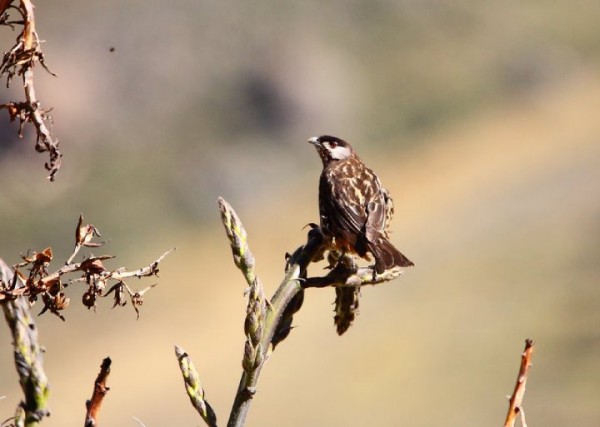
White-cheeked Cotinga Zaratornis stresemanni. Endemic of the Polylepis zone. Quite rare in our area, but regularly seen in the small Polylepis patch in the top part of the Santa Eulalia canyon close to Milloc. - Alejandro Tello
- AvistarPeru.info
- Avistar Facebook page.
- Scribd.com – powerpoint highlighting that turning 10 – 100.000 people in Lima into birdwatchers will have impact on conserving biodiversity, provide sustainable alternatives for local communities where birds can be found and create awareness about global warming. This presentation was used to convince the municipality of Miraflores that this project is a good idea
- Incaspiza.blogspot.com – blog post in Spanish similar to this one, but more details what the fair will contain.


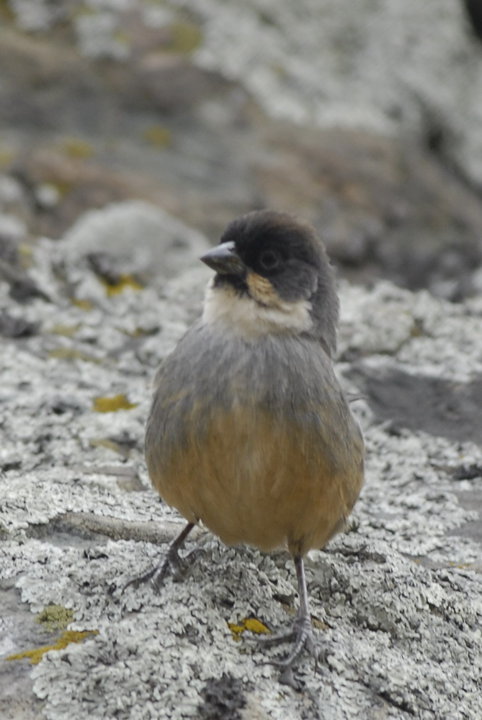
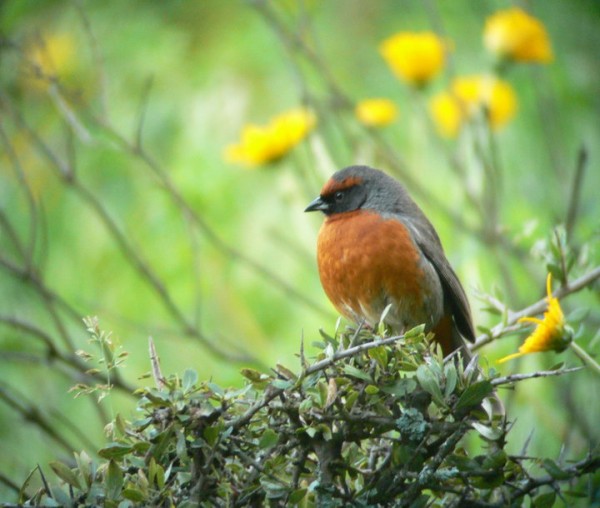
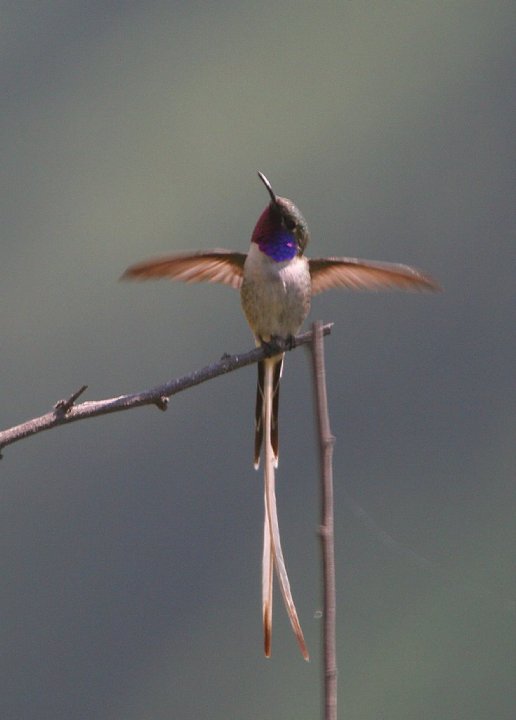
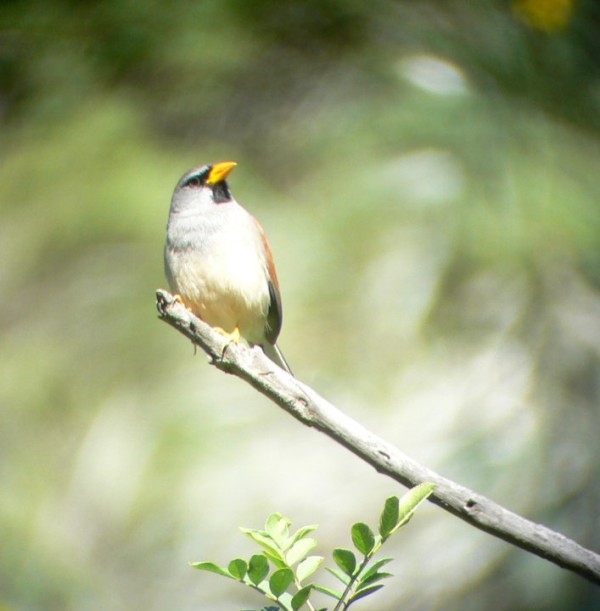
I like this post more for the pics uploaded here rather than the content of the article….The very first pic makes a good impression and it continues to the end too…